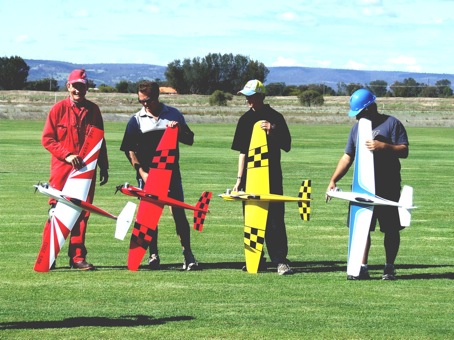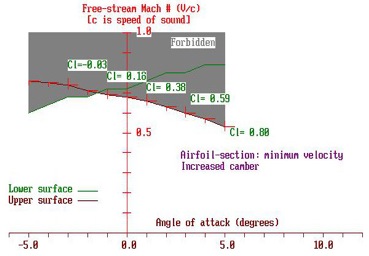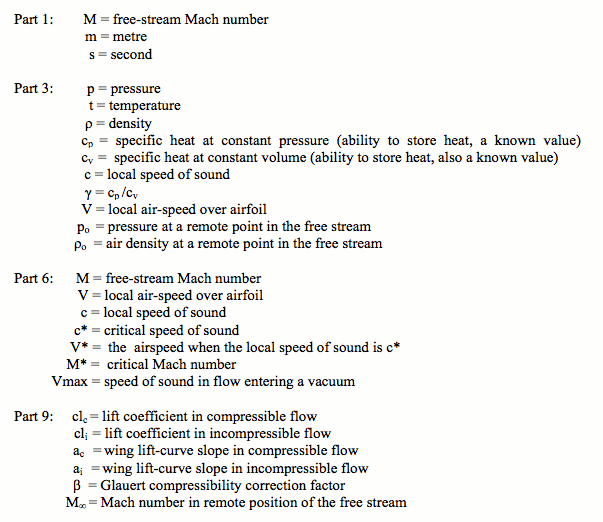This Monograph is now available to download as a PDF (1.6MB). Click here
The material below gives a good indication of the contents. The Monograph contains the theory of shock wave initiation and examines airfoil design in line with the need to increase the critical Mach number. There are 51 pages, colour laser printed on A4, comb bound.


Symbol table

Critical Mach number
Copyright: Stuart L. Sherlock, 2012
All rights reserved. No part of this publication
May be reproduced, stored in any retrieval system
or transmitted , in any from or by any means,
electronic, mechanical, photocopying, recording
or otherwise, without permission in writing
from Supercool Racing Propellers.
First Edition 2012
Supercool Racing Propellers is registered at
42, Hepburn Way, Balga 6061, Western
Australia, Australia.
Printed in Australia.
Critical Mach # Part 0: Introduction
The selection of airfoils for use in a propeller design is strongly affected by the speed of the propeller tip through the air. The issue is complicated by some perverse behaviour of the air itself. To reach an understanding of this behaviour, one needs a prepared mind.
For this reason, the following discourse has been divided up into 12 parts. Each part is intended to be complete internally; however, the preceding parts should be read first. This is the best way to "prepare the mind" for the current topic.
First a disclaimer. This article has not been peer reviewed, or even edited for mistakes. The errors present are made by me. I am proud of them. It has taken me three score years and ten less one to become this arrogant; proud I am of my mistakes as well as my few successes. Falls coming after pride are a badge of honour to me: now to work.
Part 0 you are now reading, so persist a little longer, then you will have the gist and scope of the work ahead.
Part 1 waffles on about the nature of losses in propeller tips due to their high speed through the air.
Part 2 is a brief rant about how air is made up of tiny little pieces, of which there are many. The discussion is necessary because we are going to ignore these little pieces altogether.
Part 3 introduces some big words like "thermodynamics", "macroscopic", "enthalpy" and others. We can get along quite well without these words, so we shall. They are included purely to cheer up those masochists who were so bent of mind as to study the evil subject of "thermodynamics".
Part 4 is about "fluid dynamics", a topic we have addressed previously on this website. Don't refer back to these previous articles. They are full of weird maths that we don't need here. After reading a pile of material on shock waves written by professors, I have decided that maths is the refuge of the obfuscator.
Part 5 is the good stuff about airfoil design. I don't understand much about airfoil design: luckily I don't have to. Chaps like Jones (R.T.) and Joukowsky (N.) have already done it, so all I needed to do was borrow their efforts.
Part 6 gets into Mach number, around which whole world of aerodynamics revolves. Really, not kidding. To get an understanding of how shock waves form and behave, I have read quite a number of texts so that I could cherry-pick the equations that looked useful to me. No sooner had I found one and noted it down, than on turning the page it had been changed, the dreaded symbol M appearing out of nowhere! "C" is for "Cat", and "M" is for "Mach". Remember this; your life depends on it.
Part 7 reviews the nature of shock waves, but does not say anything about how they arise. Or more importantly, it says nothing about how we may predict their occurrence. That makes it all seem rather a waste of time, but again, only the prepared mind will follow the following parts. Things get a bit weird from here on in. You have been warned.
Part 8 is really abstract. It is about "similitude"; even the authors who brave this topic seem to be confused by it. Unfortunately, similitude is central to predicting the onset of shock waves: i.e., computing the critical Mach number. We are going to use data derived from assumptions of incompressible flow to a real world situation of compressible flow. This usage depends on kinematic and dynamic similarity being valid for the transformation from incompressible to compressible flow.
Part 9 invokes the Prandtl-Glauert scaling rule. We have hammered this rule previously on this website. This time we look more closely at where the rule came from, the approximations in its formulation: indeed, whether it is in fact valid in the real world. Then we give the rule even more relevance to our airfoil designs.
Part 10. We here discuss the nature of shock wave formation.
Part 11, we look at ways to prevent shock wave formation on our propeller airfoils in the transonic speed range. Well, prevent is the wrong word; avoid and delay are better. Sort of aerodynamic procrastination. This will involve changing the contours of the "parent" airfoil, then setting the new "daughter" airfoil to the "correct" angle of attack.
Part 12, we raise the subject of aerodynamic drag, which up till now we have comprehensively ignored.
Thank you for reading through this introduction. Your time is valuable to us. We will get back to you sometime.
|